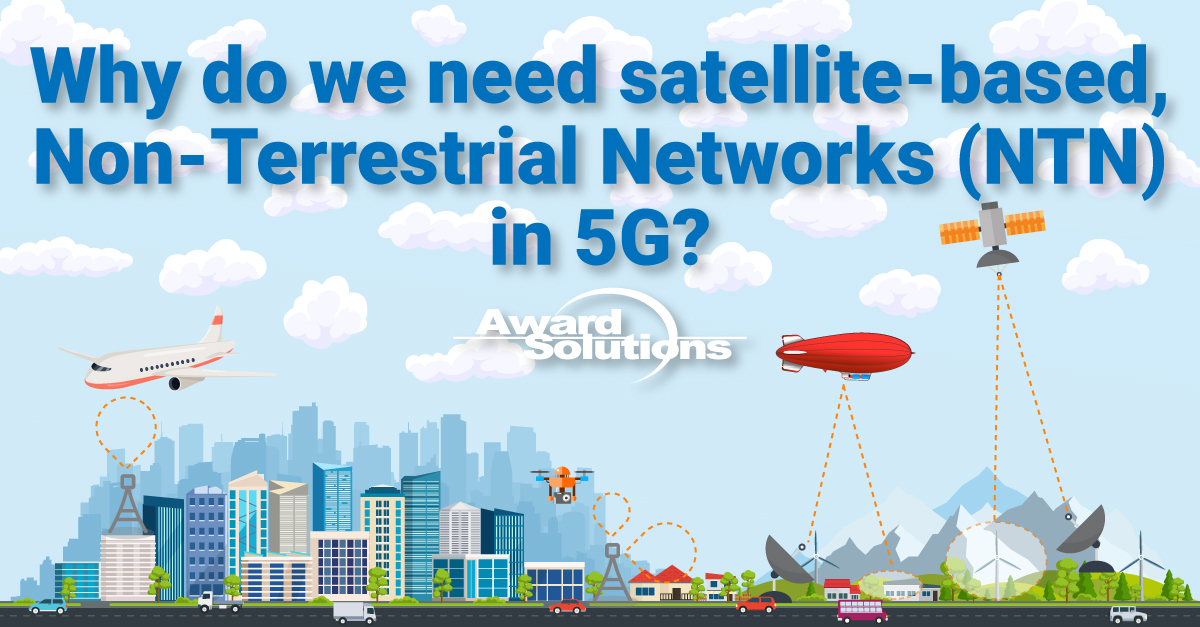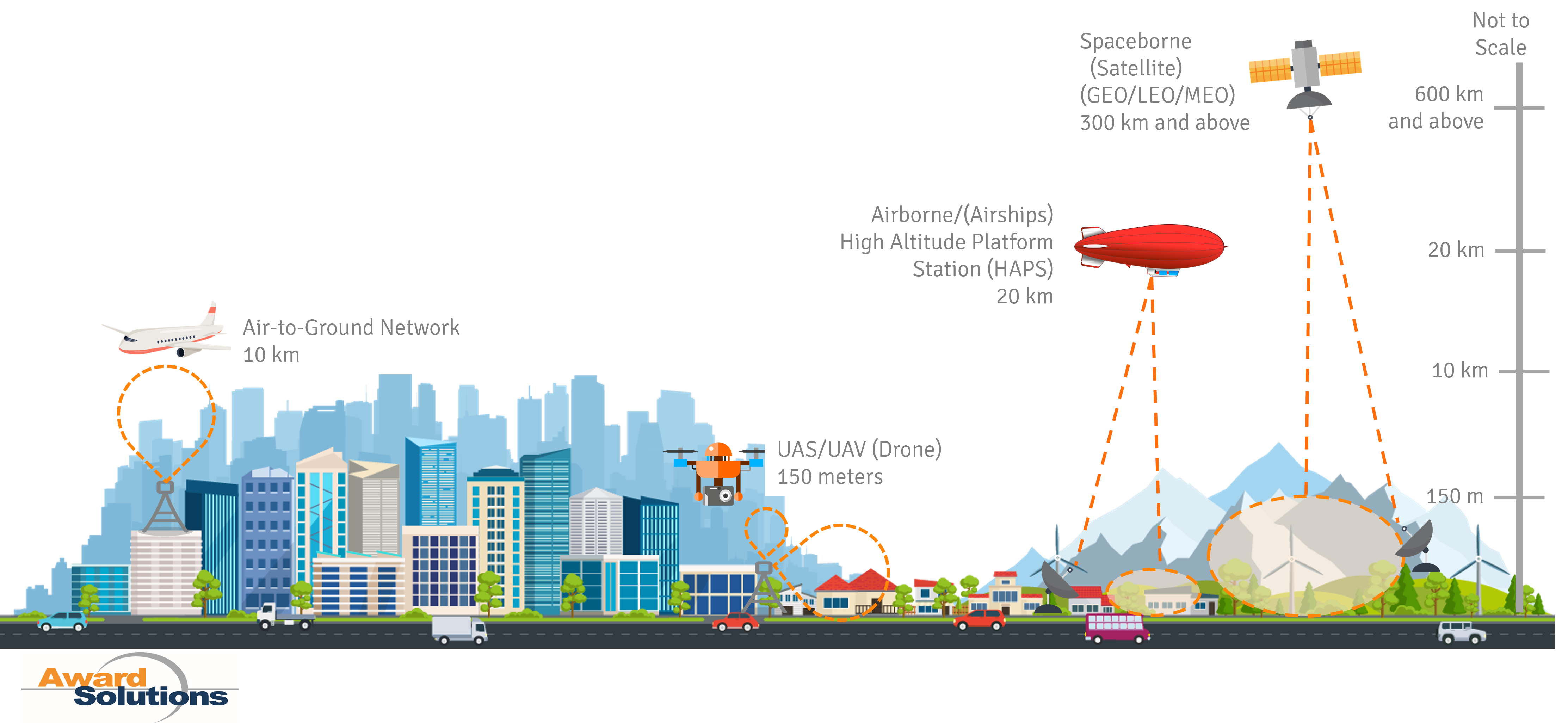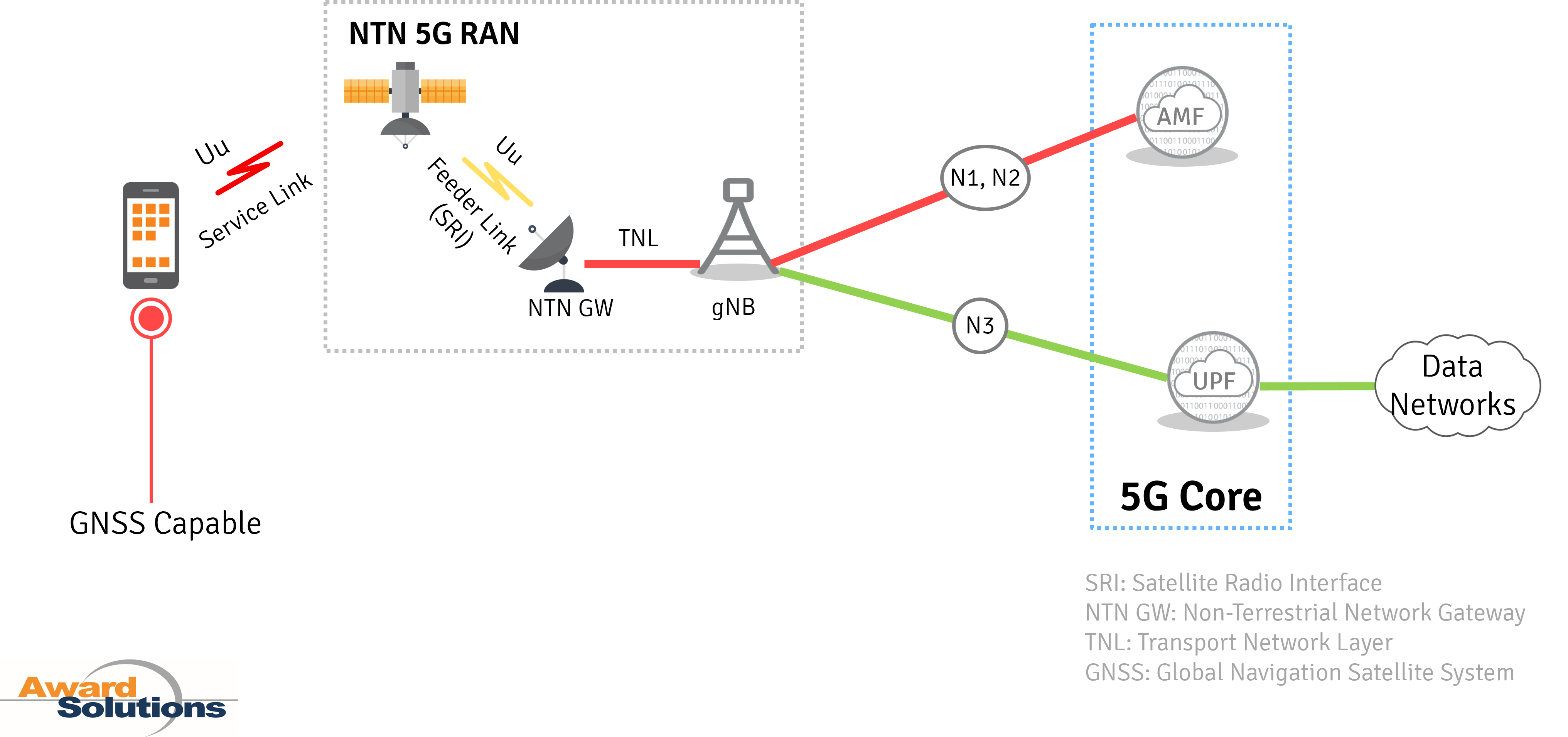
Terrestrial networks using 5G technology primarily focus on providing coverage and services targeting subscribers towards a specific geographical area. However, there are locations and circumstances like rural and remote areas, deserts, deep forests, mountain ranges, oceans, and emergencies involving public safety that mobile broadband services yield limitations. Non-Terrestrial Networks (NTN) address these areas by providing long-range coverage in the order of tens to hundreds of kilometers.
Non-Terrestrial Network Connectivity
NTN refers to networks providing connectivity through spaceborne vehicles (satellite), airborne platforms like airships and balloons, and UAS (unmanned aircraft system) platforms, which include UAVs (unmanned aerial vehicles) like drones. Air-to-ground networks can provide inflight connectivity for airplanes with the help of a base station placed in a specific geographical area.
The diagram below shows the placement of various Non-Terrestrial Network (NTN) platforms at different altitudes in space provide long-range coverage for a range of orders.

Three Benefits of Non-Terrestrial Networks
The Non-Terrestrial Network provides services under three main categories:
- Service Continuity
- Service Ubiquity
- Service Scalability
Let’s look at an example for each of these services.
Consider someone traveling by aircraft, maritime vessel, train, or car. One cannot expect guaranteed terrestrial coverage due to the inherent mobility of the mode of transportation. Service continuity is necessary to improve the user experience between the terrestrial and non-terrestrial networks.
Similarly, terrestrial networks become unavailable during a natural disaster like an earthquake or flood. Network outages impact the services experienced by end users. Service ubiquity in Non-Terrestrial Networks (NTNs) addresses public safety and the Internet of Things (IoT) like oil and gas, agriculture, and asset tracking.
Service scalability in NTNs solves issues with multicast or broadcast. The primary advantage in service scalability is that non-terrestrial networks provide orders of magnitudes in the hundreds of kilometers, amounting to extreme long-range coverage. The coverage lengths that Non-Terrestrial Networks provide allow broadcasting for all types of media and signals, enabling groups a connection not previously possible.
NTN Architecture

Satellite-based Non-Terrestrial Network (NTN) provides 5G services using transparent payload and regenerative payload architecture. The diagram below shows an overview of 3GPP-defined, transparent satellite-based 5G Architecture. Here are some points of interest from the chart.
- The 5G NG-RAN consists of gNBs connected to the 5GC with an open interface.
- 5G-enabled devices access 5G NG-RAN via the New Radio (NR) access air interface.
- The gNB is located on the ground and connects to an NTN gateway.
- The NTN payload (embarked onboard satellite) is connected to the NTN gateway via a feeder link and a service link to UE using the Uu interface.
- The Satellite Radio Interface (SRI) on the feeder link is a Uu interface.
- In transparent payload architecture, the satellite does not terminate Uu; it acts as an analog RF repeater.
- The payload does frequency conversion and amplification in both the uplink and downlink direction.
- The NTN UE is Global Navigation Satellite System (GNSS) capable.
Conclusion
The standardization of the Non-terrestrial Network in 3GPP aims at service ubiquity by closing the global gap in coverage for 5G and future generation wireless technologies. NTN can also be a key enabler in providing connectivity in critical situations when terrestrial networks cease to operate satisfactorily for any reason, thus enabling service continuity. Moreover, unlike past satellite telephony systems, NTN is designed with IoT in mind, where services can be provided to many devices using a substantial footprint, providing service scalability.
NTN networks face many technical challenges concerning RF-propagation, round-trip delays, and cell mobility, among others, addressed in Release 17 and beyond in the 3GPP.
